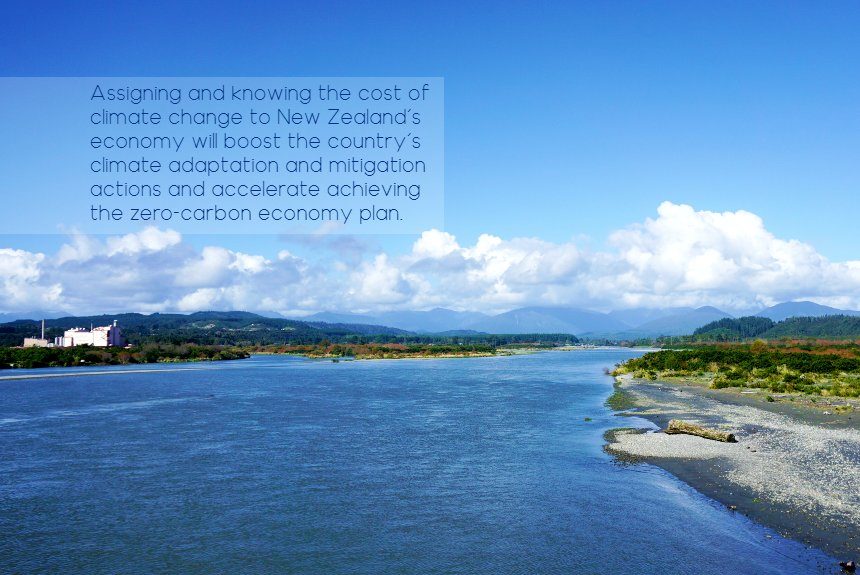New Zealand Climate Change Research Institute and the National Institute of Water Atmospheric Research (NIWA) released a report that calculates the cost of climate change to New Zealand’s economy.
The report addresses the following questions relevant to the finance and infrastructure sectors:
- What are the current economic costs of climate change in New Zealand, and
- How might we learn more in the future?
Financial dimensions of climate change in New Zealand are an under-studied area, according to the report.
The report estimates the costs of floods and droughts, events attributed to climate change from 2007 to 2017. The 2012/2014 drought and the Northland flood of 2014 are both linked to climate change.
To quantify the economic costs of climate change impacts, the report used two sets of inputs.
The first is from floods and droughts. The estimates of losses for the two droughts (2012/2014 and 2012/13) are from the New Zealand Treasury. The estimates of insured damages associated with floods are from the Insurance Council of New Zealand.
The second input estimates the fraction of attributable risk (FAR) of anthropogenic climate change to a weather event. In other words, FAR is the percentage of the risk that is attributed to climate change – specifically human-caused climate change. The report explains this formula in depth.
According to the report, the FAR figure is not static but is projected to increase in the following decades because climate change results from GHG emissions.
The NZ Treasury estimates the economic losses associated with the 2012/13 drought at NZ$1.5 billion based on its GDP reduction compared to a hypothetical year without drought. The report has assigned a FAR of 20% of the total estimated cost, or NZ$300 million of additional losses compared to the year without anthropogenic climate change.
For the 2007/08 drought, the report assigned a FAR of 20% of the NZ$2.5 billion economic losses. But this earlier drought happened on the back of a significant El Nino (ENSO) event, so the anthropogenic influence assumed on the earlier and later drought could not be the same as this drought. So even at a FAR of 15%, this would generate $420 million of economic losses.
Basing on the FARs assigned to the extreme event between 2007 to 2017, the report calculates that the cost of flood and drought linked to anthropogenic climate change is around NZ$120 million per decade from insured damages from floods and around NZ$720M of economic losses from droughts.
Because the report only focuses on climate change impacts from floods and droughts, it did not include other events like storm damage, hailstorm, wildfire, frosts, tornadoes due to the lack of available NZ peer-reviewed papers.
However, the report estimates economic losses from these events to be at least NZ$279 million between July 2007 to June 2017. With a FAR assigned at 0.3, the extra losses could add another NZ$84 million.
The report also discussed the broader climate impacts from higher mean temperatures and higher rainfall intensity and storm events, treatment of uncertainties, how climate change elsewhere affects the country, and many others.
The report intends to indicate the costs associated with climate change as a cost-benefit analysis of infrastructure resilience investments and other climate change-related policies.
Assigning and knowing the cost of climate change to New Zealand’s economy will boost the country’s climate adaptation and mitigation actions and accelerate achieving their zero-carbon economy plan.
To view the entire report, click the link below:
Source:
Frame, D., Rosier, S., Carey-Smith, T., Harrington, L., Dean, S., & Noy, I. (2018 April 21). Estimating Financial costs of climate change in New Zealand, An estimate of climate change-related weather event costs. New Zealand Climate Change Research Institute, and National Institute of Water Atmospheric Research. Retrieved from https://www.treasury.govt.nz/sites/default/files/2018-08/LSF-estimating-financial-cost-of-climate-change-in-nz.pdf



Leave a Reply